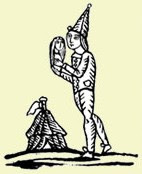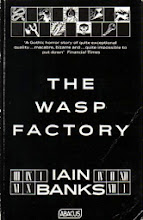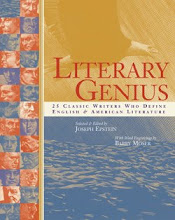
After a little break during August I am back on schedule with this Literary Theory book that I have been making notes on each month.
We covered
Englishness and Spies in July so it is time to cover chapter 12 in Part II and chapter 13 in Part III.
Chapter 12 - Awakenings
Books that sold a minimum of 50, 000 copies were known as a bestseller but this was not always a good label. They did however promise more than entertainment, and this could have been in the form of spirituality or instruction of faith. Sexuality could sell books as long as it was presented as regenerative. Regeneration could be acheived if the character was saved from a kind of inertia resulting in lack of character. In the female character this was the bland condemnation caused by marriage or spinsterhood. Awakening of desire in females was considered to be powerful and essential at the same time, but more dangerous and less contained within the bounds of social and literary decency.
As the numbers of female readers grew the liberation of modern young women in fiction ensured a bestseller. Desert romances became popular, telling the stories of violent sexuality and mysticism in the French Sahara. The muscular desert men will make the city female all woman. Acknowledgement and celebration of desire are where these novels are closest to serious fiction. E M Forster and D H Lawrence both explored the awakening of desire in women. and exploit the romantic stereotype to this end, exploring as well as denigrating it. Romance needed to be broken to acheive sexual awakening in women. Mystycism supercedes romance.
There are parallels between Freuds studies on the sexual fantasies in women and Lawrence's novels, particularly The Rainbow and Women in Love, polarities of character which develop sexual maturity. There is also a lot of imagery involving horses, being broken in violently, like the women, or stallions being ridden by women. Lawrence criticises 'half-heartedness' or a 'sort of rottenness in the will' in womens characters. This degeneration can be reversed by a sexual awakening.
Part III The Psychopathology of Modernism
Chapter 13 - Sex Novels
There were 2 preoccupations in fiction at the end of the 19th century, desire and disgust, and the Edwardians were no strangers to either. There was however more attention being bestowed upon these elements at this time. The prominence of regeneration theories ensured an equal amount of attention given to 'rottenness' and 'images of monstrosity' (p197), Mr Hyde, Moriarty, Count Dracula, the picture of Dorian Gray and Kurtz in the jungle, are just some examples. However Edward Garnett (a literary advisor) advised that sex novels were valuable because they challenged the norm.
There were two movements of this type of novel: the first being New Woman novels of the 1890's which were seen as a threat to the institution of marriage. The second wave was linked to the suffrage movement around 1905. Sex novels should not be too closely allied with the womens movement however, but the exploration of women's sexuality was prominent, and causing a lot of controversy.
The most ambitious and influential novel regarding a female character, who not only found herself in sexually charged situations and consequences, but also elicited a sexual response from every male character and the narrator as well, was Tess from Thomas Hardy's Tess of the d'Urbervilles.
Another contraversial book at the time was The Blue Lagoon by H de Vere Stacpoole, about an adolescent boy and girl shipwrecked on an island. Sexual gratification takes place, unusually, before any real desire, being a mechanical instinct in the first instance. Desire and exploration comes later, making this novel a departure from convention.
Representing the body in new ways was another angle that the Edwardian writers took. Erotic detail came out of minute detail. The Victorians had become preoccupied with scars in description, expressing moral identity. The Edwardians developed this as a provocation to desire giving 'bodies a new presence in fiction' (p203). There was also the offence caused by H G well's Ann Veronica because a woman made advances to a man.
Morality was increasingly being regulated by the state, with many initiatives being born to clean up any influences that were thought to be amoral. Criminal law was being used to reform public morality and erotic fiction became a target with lots of outcry and bannings. Censorship was not a government concern so pressure had to be exerted by the public.
It seems that passages were taken from books and paraded as amoral, but many of these were taken out of context. Lesbian undertones, alluded to in The Rainbow by Lawrence for example, were assumed by the author to be explainable by characteristic context, but the opposition did not see the passages in this way.
Any writing that included sexual activity as a means of procreation were seen as justified, it was recognition of sexuality that was frowned upon. Sex was not to be equated with pleasure. Terrorism, spies and perversion were all seen as social decay and therefore a threat to society and the human race.
Contemporary works that illustrate the above points include...
A Room with a View by E M Forster
Women in Love and The Rainbow by D H Lawrence
Tess of the d'Urbervilles by Thomas Hardy
The Blue Lagoon by H. de Vere Stacpoole
Ann Veronica by H G Wells
The Awakening by Kate Chopin
Look out for the next 2 chapters in October!

























